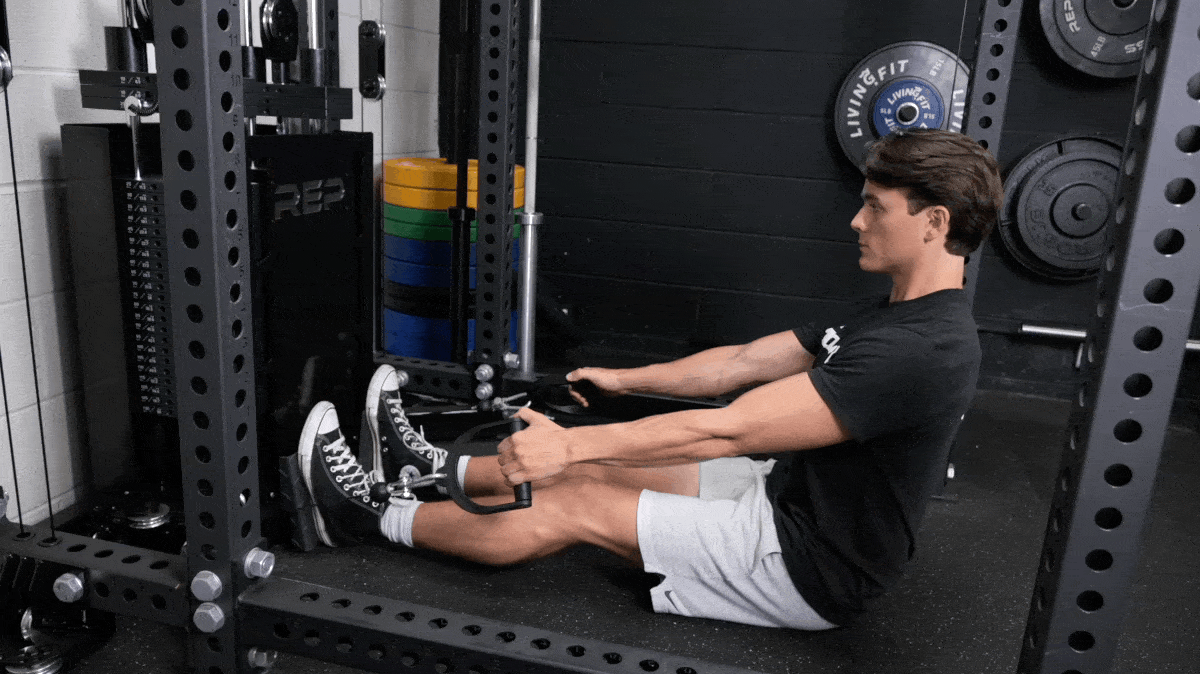When it comes to bodybuilding exercises, the bent-over row is a classic. But as muscle-building methodologies advance, some experts say it might be time to leave the bent-over row in the dust.
- By bent-over row, we’re referring to the standing, hip-hinged barbell row. The rationale you’re about to hear applies pretty well to its sibling lift, the dumbbell row, as well.
Renowned bodybuilding coach Joe Bennett has a bone to pick with bent-over rows, especially their utility as a lat exercise. Let’s hear what he has to say, and then we’ll offer up some more contemporary, forward-thinking alternatives.
Why the Bent-Over Row Is a “Horrible” Lat Exercise
Bennett argued that bent-over rows fail to adequately stretch the latissimus dorsi muscle; as close to as a bodybuilding must-do as it gets if you’re trying to maximize hypertrophy.
- “Ronnie Coleman had some of the biggest lats in the history of mankind, and even he said he mainly did bent-over rows for his lower back,” Bennett mentioned on Sep. 30, 2024.
The “Hypertrophy Coach” works with some of the most accomplished bodybuilders around, from Terrence Ruffin to Dana Linn Bailey. Bennett’s methodology marries evidence with elbow grease — using Coleman as an example, he illustrated how the technique of the bent-over row fails to fully engage the lats across their entire range of motion.
- “Can bent-over rows stretch your lats in any way, shape or form? No. They are a horrible exercise for stretching the lats.”
[Related: Best Supplements for Bodybuilding]
Bent-Over Rows: The Problem
Bennett wants you to understand your own back anatomy in order to grasp the limitations of the bent-over row. Definitely hear it from the expert, but we’ll give you a brief rundown, too:
- A bodybuilding exercise’s utility is measured mainly by how well it allows you to fully lengthen and fully contract the target muscle.
- The primary anatomical functions of your lats are shoulder extension (pulling your arm down against your torso) and adduction (drawing it in if held out to the side).
- Most folks who perform the bent-over row can’t achieve these motions due to the physical limitations of the exercise.
- In the starting position, when your lat is the most stretched, there’s no tension pulling it apart because gravity only acts downward.
“I think Coleman’s bent-over row technique was immaculate,” Bennett noted. Despite using relatively sloppy form, Bennett gave Coleman props for performing bent-over rows in a way that served his goals. Namely, training the spinal erectors and upper back muscles — not the lats.
[Related: Best Pre-Workout Supplements for Bodybuilding]
Bent-Over Rows: The Value
Bennett’s rationale is hard to argue with. Anyone who has ever done a bent-over row can attest that you simply don’t get the same torturous stretch in your lats as you would by performing a straight-arm pulldown or dumbbell pullover.
That doesn’t mean the bent-over row is a useless exercise, though. Here’s rehab and performance specialist Jordan Shallow discussing the exercise on Mar. 23, 2024:
- “There has been such a push to directly stimulate that we forget about the cumulative indirect benefits that come from strategically accumulating fatigue.”
In plain English, you don’t need to throw away the bent-over row altogether just because it’s a subpar lat exercise like Bennett argues. It’s straightforward, accessible, and trains your posterior chain from top to bottom.
[Related: Best Creatine Supplements on the Market]
But if you’re trying to strictly beef up your lats enough that you can fly away in the weight room, what should you do?
Bent-Over Rows: Do This Instead for Lats
In lieu of bent-over rows for lat growth, we’re going to endorse the seated cable row. Using a cable machine instead of a barbell smoothes out the uneven tension and most seated row stations allow you to fully lengthen and contract your lats, especially if you use a close row grip.
What You’ll Need: Seated row station, lifting straps (optional)

- Sit on the bench and fix a narrow-grip handle of your choosing to the carabiner.
- Put your feet against the footrests, grab the handle, brace your core, and straighten your legs to scoot back on the bench and pull the cable taut.
- Brace your core and maintain a vertical torso; don’t lean back.
- Row the handles in toward your lower abdomen, keeping your elbows tucked snugly to your sides.
- As you reverse the motion, allow the cable to pull your arm and shoulders forward as well.
The seated cable row will hit your lats, mid back, traps, and even apply a small amount of tension to your lumbar spine as well, making it a stellar all-around back exercise.
More Bodybuilding Content
- Chris Bumstead’s “Essential” Chest Exercise
- Dorian Yates Still Has Shredded Abs at Age 62
- 2024 Men’s Physique Olympia Preview
References
- Pedrosa GF, Lima FV, Schoenfeld BJ, Lacerda LT, Simões MG, Pereira MR, Diniz RCR, Chagas MH. Partial range of motion training elicits favorable improvements in muscular adaptations when carried out at long muscle lengths. Eur J Sport Sci. 2022 Aug;22(8):1250-1260. doi: 10.1080/17461391.2021.1927199. Epub 2021 May 23. PMID: 33977835.
- McMahon G, Morse CI, Burden A, Winwood K, Onambélé GL. Muscular adaptations and insulin-like growth factor-1 responses to resistance training are stretch-mediated. Muscle Nerve. 2014 Jan;49(1):108-19. doi: 10.1002/mus.23884. PMID: 23625461.
Featured Image: SOK Studio / Shutterstock